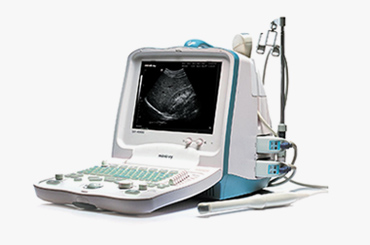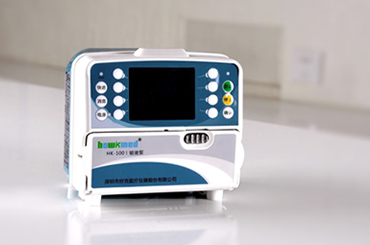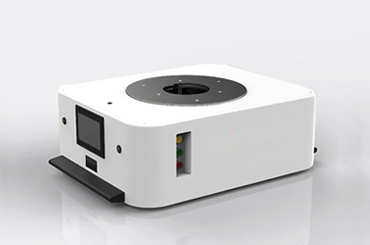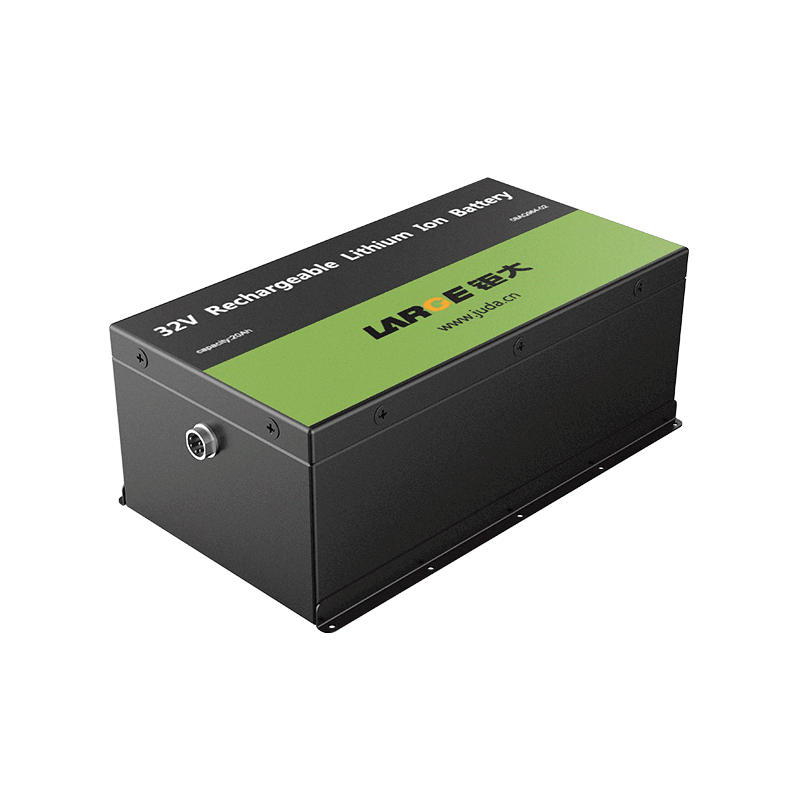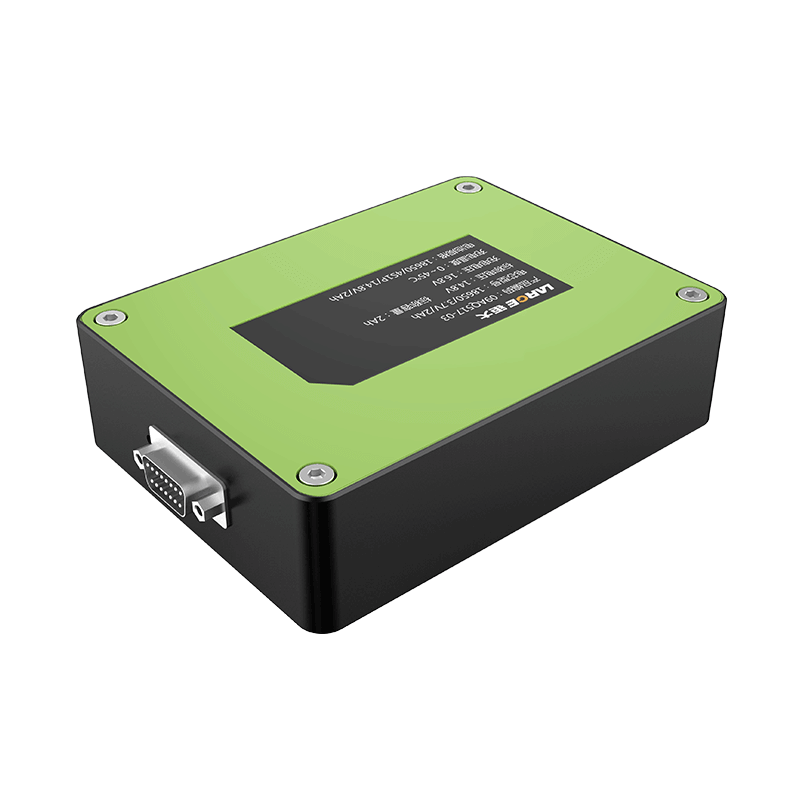-
Key Takeaways
-
Part 1: Understanding Venting in Lithium-Ion Batteries+
- 1.1 What Is the Pressure Relief Vent of Lithium-Ion Battery?
- 1.2 Why Does Venting Occur in Battery Packs of Many Applications?
- 1.3 Key Design Principles of Venting Mechanisms
-
Part 2: Safety Implications of Venting+
- 2.1 Gas Emissions and Their Impact on Safety
- 2.2 Preventing Thermal Runaway Through Venting
- 2.3 Hazards of Improper Venting in Industrial and Consumer Applications
-
Part 3: Performance Implications of Venting+
- 3.1 Effects on Battery Lifespan in Medical and Robotics Applications
- 3.2 Impact on Efficiency and Energy Output in Battery Packs
- 3.3 Operational Stability Post-Venting in Infrastructure Systems
-
Part 4: Testing and Analysis Methods+
- 4.1 Laboratory Testing for Venting Scenarios
- 4.2 Real-World Simulations in Safety-Critical Industries
- 4.3 Evaluating the Effectiveness of Venting Mechanisms
-
FAQ+
- 1. How does venting improve the safety of lithium-ion batteries?
- 2. What industries benefit most from advanced venting mechanisms?
- 3. Why choose Large Power for customized venting solutions?
Evaluating the Effectiveness of Venting in Lithium-Ion Batteries
APR 30, 2025 Pageview:12

Lithium-ion batteries have revolutionized industries like medical devices, robotics, and transportation. Their dominance stems from unparalleled efficiency and reliability, capturing over 67.4% of the battery market in 2024. For instance, lithium batteries in medical devices are 40% lighter than steel-shelled counterparts while offering 10-15% higher capacity. However, their effective operation hinges on safety mechanisms like the pressure relief vent of lithium-ion battery systems. This venting mechanism plays a pivotal role in mitigating risk, ensuring safety, and maintaining performance. How does venting influence these factors, and can it effectively minimize risks in diverse applications?
Key Takeaways
Venting in lithium-ion batteries is important for safety. It stops pressure from building up and avoids explosions.
Good venting designs make batteries last longer and work better. They let gases out, stopping harm and keeping energy steady.
Fields like medical tools and robots gain a lot from good venting. It keeps them safe and dependable for important uses.

Part 1: Understanding Venting in lithium-ion batteries
1.1 What Is the Pressure Relief Vent of lithium-ion battery?
The pressure relief vent is a critical safety feature in lithium-ion batteries. It acts as a controlled outlet for releasing internal pressure when it exceeds safe limits. This mechanism prevents catastrophic failures, such as explosions or fires, by allowing gases to escape in a controlled manner. In applications like medical devices, robotics, and industrial systems, the vent ensures operational safety by mitigating risks associated with overpressure.
The venting process is triggered by a pressure-sensitive structure integrated into the battery pack design. This structure may include materials with predefined strength thresholds or mechanical components like spring valves. Once activated, the vent releases gases rapidly, often within milliseconds, to prevent thermal runaway. Its one-way design ensures that external contaminants cannot enter the battery, maintaining its integrity.
1.2 Why Does Venting Occur in Battery Packs of Many Applications?
Venting occurs when internal pressure builds up due to chemical reactions, overcharging, or external damage. In lithium-ion batteries, this pressure often results from the generation of gases during thermal or electrochemical events. For example, in EV battery packs, high energy density and rapid charging cycles can lead to heat accumulation, triggering venting.
In industrial and infrastructure applications, venting plays a vital role in preventing chain reactions. A single cell failure can escalate into thermal runaway, jeopardizing the entire system. By releasing pressure, the vent isolates the issue, giving the battery management system (BMS) time to respond and contain the fault.
1.3 Key Design Principles of Venting Mechanisms
Effective venting mechanisms rely on several key design principles:
Pressure Sensitivity: The vent must activate at a precise pressure threshold to ensure timely response.
Rapid Response: The mechanism should release gases within milliseconds to prevent escalation.
One-Way Design: Gases must exit without allowing external contaminants to enter.
Failure Protection: Depending on the application, vents may be single-use (rupture-based) or resettable (spring-valve-based).
In EV battery packs and energy storage systems, industrial-grade vents feature larger release areas to handle high gas volumes. These designs ensure system stability and safety, even under extreme conditions. For customized venting solutions tailored to your industry, explore Large Power’s case studies.

Part 2: Safety Implications of Venting
2.1 Gas Emissions and Their Impact on Safety
Venting in lithium-ion batteries releases gases generated during thermal or electrochemical reactions. These gas emissions play a crucial role in determining the safety of battery systems. However, the composition and volume of these gases vary significantly based on the battery's chemistry and state of charge. For instance, studies have shown that NMC/LMO batteries emit approximately 780 L/kg of gases during thermal runaway, while LiFePO4 batteries release only 42 L/kg. Despite the lower volume, LiFePO4 cells produce higher concentrations of hazardous hydrogen fluoride (HF), which poses significant risks to safety.
Battery Type | Total Gas Emissions (L kg−1) | HF Emissions (Concentration) |
|---|---|---|
NMC/LMO | 780 | Higher concentration |
LiFePO4 | 42 | Higher concentration |
The safety risks associated with these emissions extend beyond toxicity. During thermal runaway conditions, the released gases can ignite or explode if exposed to high temperatures or sparks. This makes venting a critical safety feature, as it directs these gases away from the battery system, reducing the likelihood of combustion. To mitigate risks, you must consider the battery's chemistry and application when designing venting mechanisms. For example, industrial energy storage systems often require robust venting solutions to handle large volumes of gas emissions safely.
2.2 Preventing Thermal Runaway Through Venting
Thermal runaway is one of the most severe safety challenges in lithium-ion batteries. It occurs when a single cell failure triggers a chain reaction, leading to rapid temperature increases and gas generation. Venting mechanisms act as the first line of defense against thermal runaway by releasing pressure and isolating the affected cell. This prevents the failure from spreading to adjacent cells, ensuring the overall safety of the battery system.
In industrial applications like energy storage systems, venting mechanisms are often integrated with battery management systems (BMS). When the BMS detects abnormal pressure or temperature levels, it triggers the venting process. This coordinated response delays the progression of thermal runaway, providing valuable time for safety systems to activate. For instance, in grid-scale energy storage facilities, venting can work alongside fire suppression systems to minimize the risk of catastrophic failure.
The effectiveness of venting in preventing thermal runaway depends on its design. Industrial-grade vents typically feature larger release areas to accommodate high gas volumes. They also employ one-way designs to prevent external contaminants from entering the battery. By incorporating these features, you can enhance the safety performance characteristics of lithium-ion batteries in critical applications.
2.3 Hazards of Improper Venting in Industrial and Consumer Applications
Improper venting can lead to severe safety hazards in both industrial and consumer applications. Inadequate venting designs may fail to release pressure effectively, increasing the risk of explosions or fires. For example, a case study on a lithium-ion battery energy storage system (BESS) disaster in Beijing revealed that improper venting contributed to a gas explosion and subsequent fire. This incident underscores the importance of designing venting systems that can handle the specific demands of industrial applications.
In consumer electronics, improper venting can compromise user safety. Devices like smartphones and laptops rely on compact battery designs, which may limit the effectiveness of venting mechanisms. If venting fails, the resulting pressure buildup can cause the device to rupture or ignite. To address these challenges, you should prioritize venting solutions tailored to the specific application. For instance, consumer devices may benefit from resettable venting mechanisms, while industrial systems require robust, single-use designs.
By understanding the hazards of improper venting, you can implement safety practices that enhance the reliability of lithium-ion batteries. Whether in industrial energy storage systems or consumer electronics, proper venting is essential for maintaining safety and performance.

Part 3: Performance Implications of Venting
3.1 Effects on Battery Lifespan in Medical and Robotics Applications
Venting mechanisms play a crucial role in preserving the lifespan of lithium-ion batteries used in medical devices and robotics. These applications demand high reliability and consistent performance, as failures can lead to operational disruptions or safety risks. When venting occurs, it prevents internal pressure buildup, which could otherwise damage the battery's internal components. This proactive pressure relief minimizes the risk of irreversible chemical degradation, extending the battery's usable life.
In medical devices, where precision and uninterrupted operation are paramount, venting ensures the battery remains functional even under stress. For example, portable medical equipment powered by lithium-ion batteries benefits from venting mechanisms that mitigate risks during high-demand scenarios, such as emergency use. Similarly, robotics applications rely on venting to maintain battery integrity during intensive tasks, such as repetitive motion or high-speed operations. By incorporating robust venting designs, you can optimize battery lifespan and reduce maintenance costs in these critical fields.
Tip: For customized venting solutions tailored to medical and robotics applications, explore Large Power’s case studies.
3.2 Impact on Efficiency and Energy Output in Battery Packs
Venting directly influences the efficiency and energy output of lithium-ion battery packs. When internal pressure builds up due to chemical reactions or external stress, venting mechanisms release gases to stabilize the system. This stabilization prevents energy loss caused by overheating or cell damage, ensuring the battery pack operates at peak efficiency.
In energy storage systems, venting mechanisms are particularly vital. These systems often handle high energy densities and prolonged discharge cycles, which can generate significant heat and pressure. By venting excess gases, the battery pack maintains optimal energy output, supporting applications like grid-scale storage or backup power for data centers. For example, industrial-grade venting designs feature larger release areas to accommodate high gas volumes, ensuring consistent performance even under extreme conditions.
Application | Efficiency Impact | Energy Output |
|---|---|---|
Medical Devices | Enhanced reliability | Stable discharge |
Robotics | Improved precision | Consistent power |
Industrial Energy Storage | Reduced heat buildup | Prolonged cycles |
To maximize efficiency and energy output, you should prioritize venting mechanisms that align with your specific application needs. Whether you're designing battery packs for consumer electronics or industrial systems, venting performance remains a key factor in achieving operational excellence.
3.3 Operational Stability Post-Venting in Infrastructure Systems
Operational stability after venting is critical for infrastructure systems that rely on lithium-ion batteries. Venting mechanisms not only prevent catastrophic failures but also ensure the system remains functional after pressure relief. This stability is essential in applications like transportation, security systems, and large-scale infrastructure projects.
For instance, in transportation systems powered by lithium-ion batteries, venting prevents thermal runaway and isolates affected cells. This containment allows the battery management system (BMS) to recalibrate and restore operational stability. Similarly, in security systems, venting mechanisms ensure uninterrupted power supply during emergencies, safeguarding critical infrastructure.
Note: Infrastructure systems often require advanced venting designs integrated with BMS for seamless post-venting recovery. Learn more about specific solutions from Large Power.
By implementing venting mechanisms that prioritize operational stability, you can enhance the reliability of lithium-ion batteries in infrastructure systems. This approach minimizes downtime and ensures consistent performance, even in demanding environments.
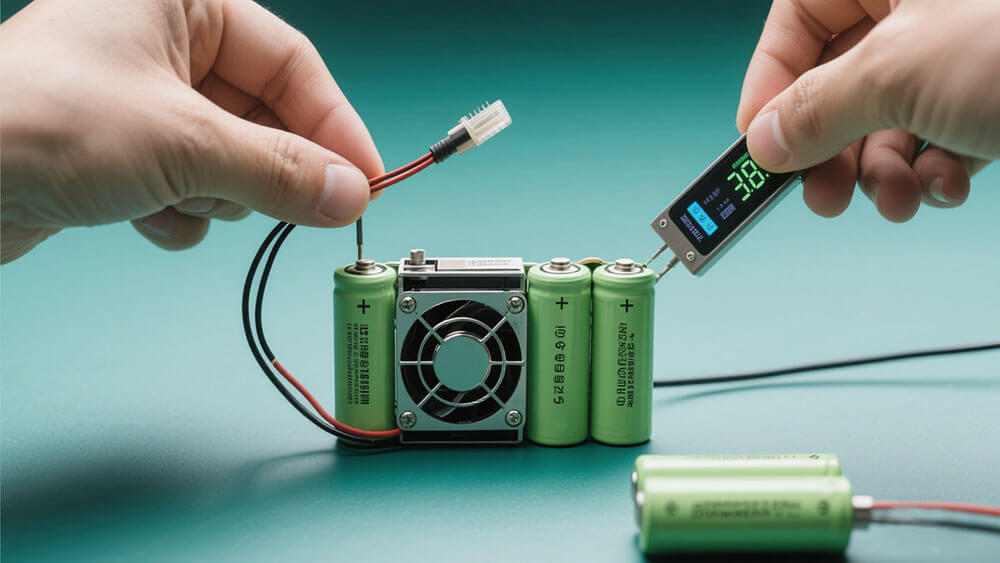
Part 4: Testing and Analysis Methods
4.1 Laboratory Testing for Venting Scenarios
Laboratory testing provides a controlled environment to study venting scenarios in lithium-ion batteries. These tests simulate extreme conditions to evaluate how venting mechanisms respond to thermal or electrochemical events. You can use various methodologies to gather precise data on gas emissions, heat release, and energy output during venting.
Methodology | Description |
|---|---|
Sealed Vessel Testing | Estimates gas volume produced during thermal runaway and assesses vent gas composition. |
Oxygen Consumption Calorimetry | Measures heat released during thermal runaway by analyzing oxygen consumption. |
Accelerating Rate Calorimetry (ARC) | Studies variables affecting thermal decomposition and runaway characteristics, estimating total energy release. |
Fractional Thermal Runaway Calorimeter (FTRC) | Measures energy output and mass ejections during thermal runaway, adaptable to various cell types and triggering mechanisms. |
These methods allow you to conduct detailed analysis and identify the optimal venting designs for specific applications. For instance, sealed vessel testing is ideal for assessing gas emissions in industrial energy storage systems, while ARC provides insights into thermal stability for medical devices.
Tip: Collaborate with experts to customize testing protocols for your application. Learn more about tailored solutions from Large Power.
4.2 Real-World Simulations in Safety-Critical Industries
Real-world simulations bridge the gap between laboratory testing and practical applications. These simulations replicate operational conditions in industries like robotics, transportation, and infrastructure. By doing so, you can evaluate how venting mechanisms perform under actual stress scenarios.
For example, in robotics, simulations test venting during repetitive motion tasks or high-speed operations. In transportation, they assess venting efficiency during rapid charging or extreme temperatures. These simulations provide actionable data, helping you refine venting designs to enhance safety and performance.
Note: Real-world simulations are essential for safety-critical industries. They ensure venting mechanisms meet regulatory standards and operational demands.
4.3 Evaluating the Effectiveness of Venting Mechanisms
Evaluating venting effectiveness involves analyzing its impact on safety and performance. You can use data from laboratory tests and simulations to measure key metrics like gas release efficiency, thermal containment, and post-venting stability. This analysis helps you determine whether the venting mechanism meets the specific needs of your application.
For instance, in industrial energy storage systems, effective venting minimizes thermal runaway risks and ensures system stability. In medical devices, it preserves battery integrity during high-demand scenarios. By combining testing and analysis, you can optimize venting designs for diverse applications.
Call to Action: Explore customized venting solutions for your industry from Large Power.
Venting mechanisms in lithium-ion batteries serve a dual purpose: enhancing safety and maintaining performance across diverse applications. They mitigate risks like thermal runaway and gas buildup while preserving battery integrity. For example:
A failure rate of one in 200,000 led to recalls of nearly six million lithium-ion packs.
Short circuits caused by microscopic particles can trigger thermal runaway, described as "venting with flame."
Lithium-ion cells with cobalt cathodes become unstable at 150°C (302°F), increasing safety risks.
Optimizing venting designs is crucial for industries like medical devices, robotics, and transportation. Future advancements will focus on integrating smart technologies, improving reliability, and meeting the growing demand for energy storage systems.
Market Driver | Description |
|---|---|
Growth of Electric Vehicle (EV) Adoption | Rising EV demand drives innovation in battery safety mechanisms. |
Technological Innovations | Smart battery packs require advanced venting systems. |
Increased R&D Investments | Research enhances venting efficiency and safety. |
For customized venting solutions tailored to your industry, explore our consultation services.
FAQ
1. How does venting improve the safety of lithium-ion batteries?
Venting prevents pressure buildup, reducing risks of thermal runaway and explosions. It isolates faulty cells, ensuring the safety of the entire battery system.
2. What industries benefit most from advanced venting mechanisms?
Industries like medical devices, robotics, and infrastructure rely on venting for safety and performance in critical applications.
3. Why choose Large Power for customized venting solutions?
Large Power offers tailored venting designs for diverse applications, ensuring safety and efficiency. Explore Large Power customized consultation services for more details.
- Prev Article: no more
- Next Article: Learn How to Identify and Prevent Lithium Battery Swelling in Devices
Leave Message
Hottest Categories
-
Hottest Industry News
-
Latest Industry News




